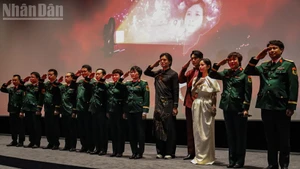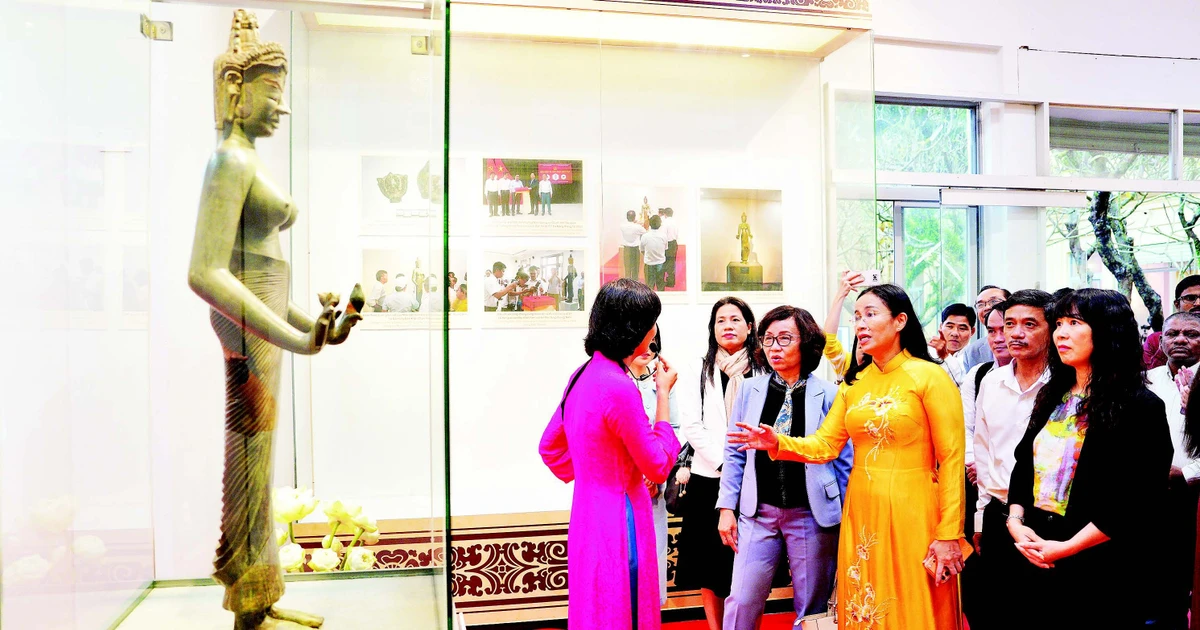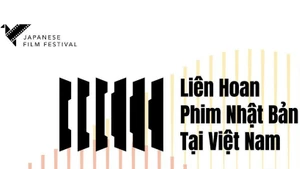Honouring Hanoi's architecture through historical periods Flipping through the uniquely designed pages, readers of the book are transported back in time, discovering the city’s past through its architectural landmarks. Each building mentioned in the book serves as a historical witness, embodying the cultural values and rich heritage of a thousand-year-old civilisation.
Although it was only released a little over ten days ago, the book has already garnered praise from experts for its scale, scope, and modern design and presentation. The bilingual Vietnamese-French book is divided into three sections: " Architecture of ancient Thang Long-Hanoi", "Hanoi architecture during the French colonial period with iconic styles", and "Post-1954 Hanoi architecture".
Highly praising the harmonious blend of content and images in the book, Sophie Maysonnave, the Cultural Cooperation and Activities Attaché and Director of the French Institute in Vietnam, said it creates an engaging experience for readers. She noted that the "Vietnamese" essence is clearly felt in this book when placed in the context of its interactions and fusion with French culture.
Sophie Maysonnave stated: "The selected buildings are mostly public structures, which are not easily accessible. Through each page of the book, readers have the opportunity to rediscover Hanoi's architectural values in a detailed and vivid manner.”
"This book is truly special. Indochine architecture, as well as buildings from this period, not only carry the marks of French architecture but also reflect the adaptation to the local climate and culture. The work affirms the importance of preserving and promoting architectural heritage in the current context," Sophie Maysonnave emphasised.
Sharing about the special features of the publication, Nguyen Quoc Khanh, Chairman of AA Architecture Construction Joint Stock Company, said that the presentation was attractive, easy to access, and suitable for a wide range of readers, especially young people. "Many young readers often feel hesitant when facing academic books. Therefore, the book is designed with a QR code, so young people can scan it and learn more about the process of creating the book. This is also a way to spark curiosity and attract attention to the work," Khanh added.
Each architectural work is a slice of history.
The book explores the architectural evolution of Hanoi, starting from the ancient foundations of Thang Long before the 18th century, transitioning into the period of French colonial influence, where Western art styles such as Beaux-Arts, Art Deco, and Gothic were introduced. The book also highlights the blending of global architectural excellence with local cultural traditions. Each historical piece of architectural evidence is explained in a way that is both accessible and emotionally engaging.
Phan Dang Son, Chairman of the Vietnam Architects Association, stated that in every city in the world, architecture provides a reflection of its cultural foundation and the level of development. Hanoi is one of the leading cities globally that clearly demonstrates this.
"In this book, through concise explanations and vivid illustrations, we can witness the desire to showcase the architectural brilliance of those with professional knowledge and a deep passion for Hanoi," said architect Phan Dang Son.
 |
| A glimpse of some content and images inside the book. |
The book "Architecture of Hanoi — The Fusion of Vietnameseand French Cultures" was published in collaboration between The World Publishing House and Phanbook. It features contributions from Dr Tran Quoc Bao, an architect and lecturer at Hanoi University of Civil Engineering, who wrote the Vietnamese section; translator Tham Yen Linh, who translated the French version; and photographer Le Hoang, who captured the book’s main photos.
Thanks to diligent research and exploration, the team behind this publication has skilfully guided readers on how to discover the stories and historical significance behind each architectural masterpiece. The readers are taken back in time to the 19th and 20th centuries, exploring the nooks and crannies of 18 architectural works, which are considered the masterpieces of Hanoi. Many readers have expressed their enjoyment in learning more about the Presidential Palace, the Hanoi Opera House, the Government Guest House, Hoa Lo Prison, the Metropole Hotel, and more.
Historian Philippe Le Failler, Head of French School of Asian Studies in Hanoi, shared that in the journey of exploring the city’s architectural heritage, the authors lead the readersthrough each prominent building, explaining their history and architectural styles.
"With great attention to detail and the rich use of images, maps, and drawings in the book, each structure and each historical site is not just an architectural story but also a sliceof Hanoi’s history," historian Philippe Le Failler added.
















